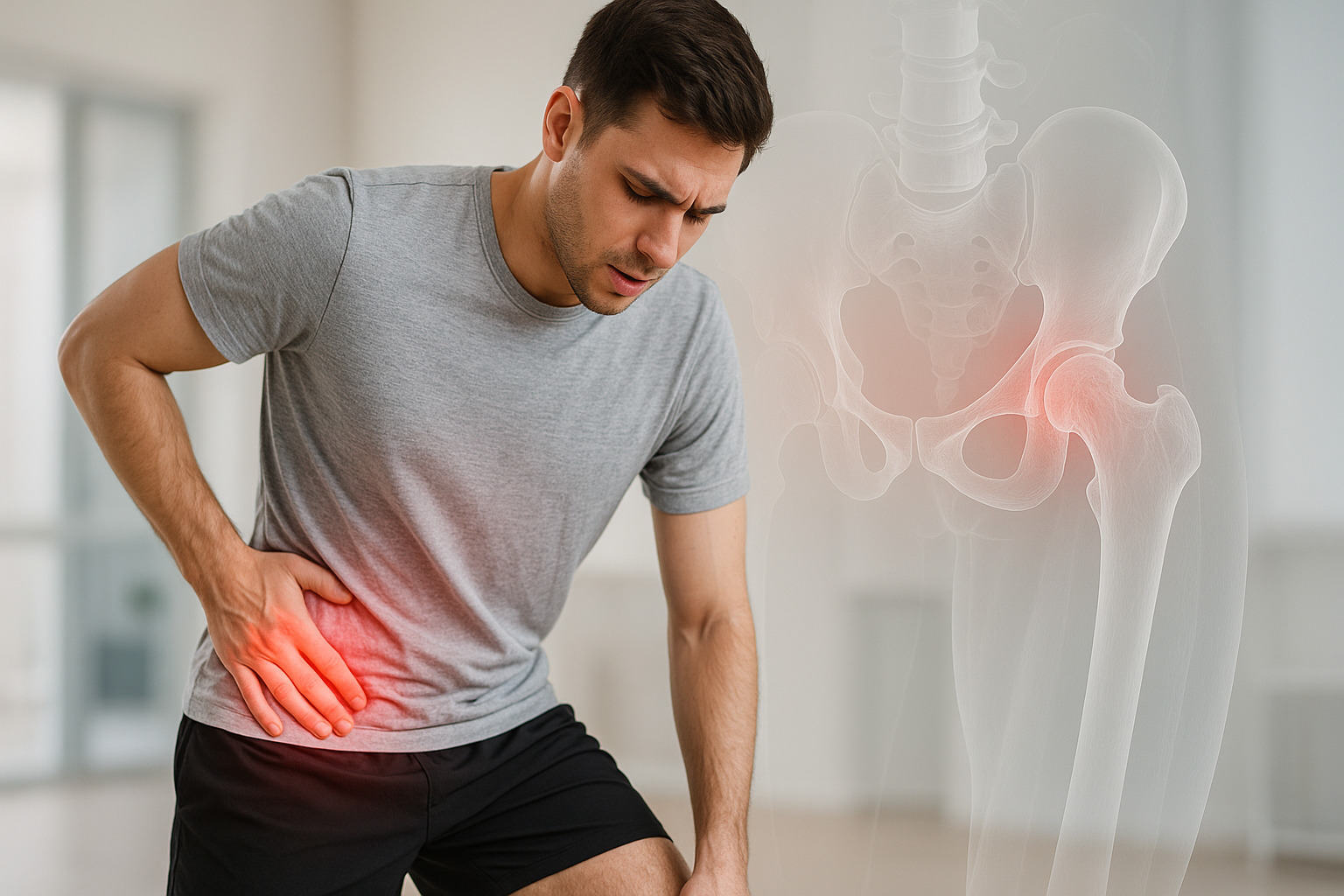

Hip pain was once considered a problem mostly affecting older adults or those with physically demanding lifestyles. Today, however, physiotherapists and orthopaedic specialists are seeing a dramatic rise in hip issues among people in their 20s, 30s, and early 40s. This shift raises an important question: Why are younger adults now experiencing hip pain much earlier than previous generations?
The causes are multifactorial—ranging from structural conditions like Femoroacetabular Impingement (FAI) and labral tears, to lifestyle factors, biomechanics, and even early signs of hip arthritis. Understanding these underlying triggers helps individuals recognise symptoms sooner and seek appropriate treatment to prevent long-term joint damage.
FAI has become one of the most commonly diagnosed causes of hip pain in active young adults. It occurs when the ball-and-socket of the hip joint do not fit together perfectly, causing abnormal friction during movement.
There are two major types:
These structural changes may be influenced by intense sports during adolescence (especially football, dance, martial arts, and hockey) where repeated hip flexion leads to bone adaptation. Over time, excessive friction from FAI can damage the labrum and even speed up cartilage wear, leading to early arthritis if untreated.
Many young adults with FAI report:
Because FAI is a structural condition, early diagnosis and targeted treatment are crucial to preventing further joint damage.
The hip labrum is a ring of cartilage surrounding the hip socket. It acts like a seal—stabilising the joint and allowing smooth movement. Unfortunately, this structure is vulnerable to injury, especially in younger adults with high activity levels or structural issues like FAI.
Some labral tears develop gradually and are mistaken for muscle strains, which leads many young individuals to ignore symptoms for months or even years.
Typical symptoms include:
If left untreated, labral tears can disrupt the smooth movement of the hip joint and contribute to early-onset arthritis.
Modern lifestyles have changed significantly over the past decade. Younger adults today spend more time sitting—whether working remotely, studying, or using digital devices. Long hours of sitting place the hips in constant flexion, tightening the hip flexors and weakening gluteal muscles.
This imbalance leads to:
Even those who exercise regularly may have biomechanical issues if their training programs focus on aesthetics rather than functional movement. Activities such as heavy lifting, running, and high-intensity workouts may contribute to hip pain when performed with deficient mobility or strength imbalances.
Some common biomechanical problems found in younger adults include:
These issues increase stress on the hip joint during day-to-day tasks and workouts, accelerating wear and discomfort.
While arthritis is often associated with ageing, younger adults can develop it earlier due to underlying structural abnormalities or repetitive joint stress.
Cartilage damage in the hip is irreversible, making early detection essential. Many patients dismiss early arthritis symptoms as muscle soreness or fatigue, delaying professional assessment.
Typical early arthritis symptoms include:
Younger adults who are active, athletic, or work in physically demanding jobs may unknowingly push their joints beyond their natural limits, contributing to cartilage wear at an earlier age.
Many younger adults grew up in an era where sports specialisation became more common at a younger age. Early intense training—especially in sports that require repeated hip flexion—can predispose individuals to structural changes in the hip joint.
Sports commonly associated with future hip problems include:
Teens who train intensely while their bones are still developing are more likely to develop CAM morphology or labral damage, which may not become symptomatic until adulthood.
Early hip pain should never be ignored—especially if it persists for more than a few weeks, interferes with movement, or is accompanied by clicking, locking, catching, or reduced mobility. Early assessment and intervention can significantly improve long-term outcomes and prevent the progression of arthritis.
A qualified practitioner may recommend:
Early management is key to preserving hip health and preventing chronic pain.
No. While mild soreness from exercise can be normal, persistent hip pain is not typical and may indicate structural or biomechanical issues that require assessment.
Some symptoms may temporarily improve with rest, but structural issues like FAI or labral tears generally do not heal without proper treatment. Strengthening and mobility work can help manage symptoms, but early diagnosis is essential.
Yes. Prolonged sitting tightens hip flexors, weakens glutes, and disrupts normal biomechanics—all of which increase stress on the hip joint.
Seek assessment if you have:
Untreated hip conditions—especially FAI or labral tears—can accelerate cartilage wear and lead to early arthritis. Early intervention helps preserve joint health.
=====